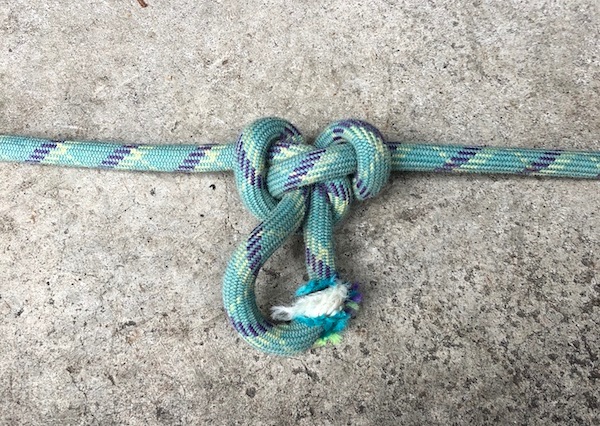How to Tie Alpine Butterfly Knot
Uses of the butterfly knot
/ John Godino 
The butterfly is generally not one of the standard climbing knots beginners learn, but it's well worth learning once you have mastered the basics. (It's often referred to as an "alpine" butterfly, but I have no idea why. Drop the "alpine" and just called a butterfly knot.)
How is the butterfly knot useful for climbers?
-
The butterfly is generally easier to untie after it's been weighted.Use it anytime you're significantly weighting a rope (like fixing ropes for a big wall, or tying off one end of rope for snow anchor testing or crevasse rescue practice.) Grab each of the "wings" of the knot and flex them back and forth to untie. Once you gain some experience with the butterfly knot, you may find that you use it to replace the figure eight on a bight in just about every situation.
-
It's adjustable. If, after you make the initial loop, you decide it needs to be a little longer or a little shorter, you can feed the slack through the knot to adjust the size of the loop. (You can do this with a figure 8 on a bite, but it's quite a bit more awkward.)
-
It's a great knot for the middle member(s) on a rope team. While a figure eight on a bight is acceptable for this middle person tie in, it's designed to be weighted in only one direction. The butterfly is designed for the rope to be weighted on either strand. As the middle person on a rope team, you don't know which strand will hold you in a crevasse fall.
-
It can be tied between a two person rope team for glacier travel, to help minimize the length of a crevasse fall. Any kind of crevasse rescue situation is more difficult with just one person doing the pulling, but if you tie a few knots in the rope between you and your partner, these can hopefully catch on the lip of a crevasse in the event of a fall, and minimize the length of the fall. (Yes, they can complicate the rescue, but that's another topic.) Under the right conditions, this has been tested and proven effective. There is also another knot that has a slightly larger diameter called the brake knot, which may be preferable for two person crevasse travel, but the butterfly is acceptable.
-
It can isolate a damaged part of the rope. Through stepping on the rope with a crampon, an ice tool puncture, being loaded over a sharp edge or maybe rock fall, a rope might get some minor damage so you're not comfortable using it anymore. Without knowing the butterfly, you'd have to cut out the damaged part and tie the new ends together. With the butterfly, you can isolate the damaged part of the rope inside a loop of the knot and you're good to go, with a near full strength and full length rope. (Now you need to figure out how to pass the knot while you are on rappel or belaying . . . but that's a different topic!)
And, because it's pretty much impossible to explain how to tie a knot in words, here is a short and sweet video from REI that does the job.
(It's not my preferred method, because this darn knot has probably more ways to tie it than just about any other, but it works OK. My advice: just learn one good way to tie this knot and don't confuse yourself with several.)
How to Tie Alpine Butterfly Knot
Source: https://www.alpinesavvy.com/blog/uses-of-the-butterfly-knot